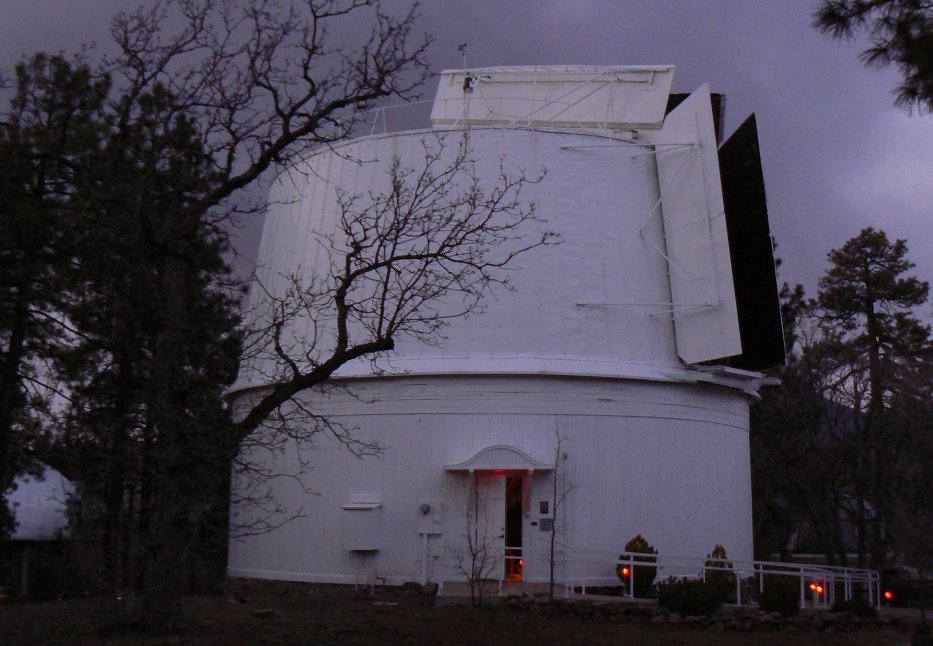
|
Lowell Obervatory, Flagstaff < Factsheet > |
 |
| Nach einer kurzen Fahrt durch ein Waldstück auf den Mars Hill werden dem Besucher legendäre Dinge geboten: Der 24"-Clark-Refraktor, das Pluto-Teleskop, das Lowell-Mausoleum und das Slipher Building. |
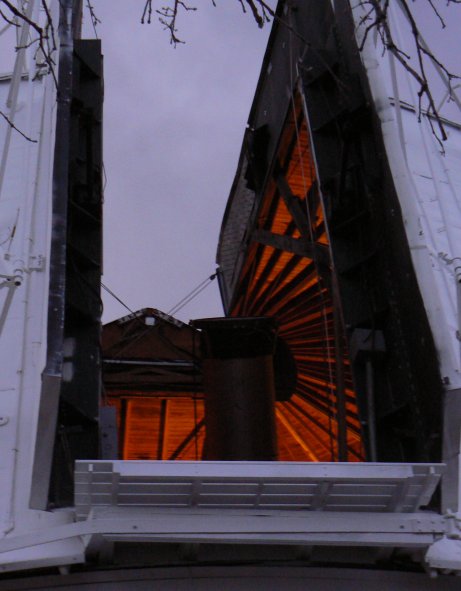 |
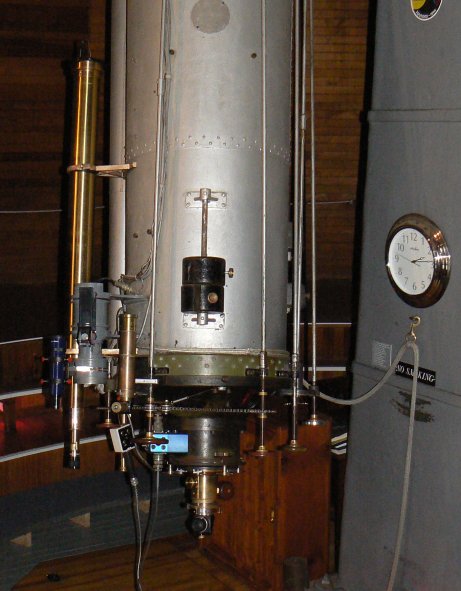 |
| Die geöffnete Holzkuppel des Clark-Telescope. | Abends dürfen Besucher den Planeten Saturn durch das Clark-Telescope beobachten. |
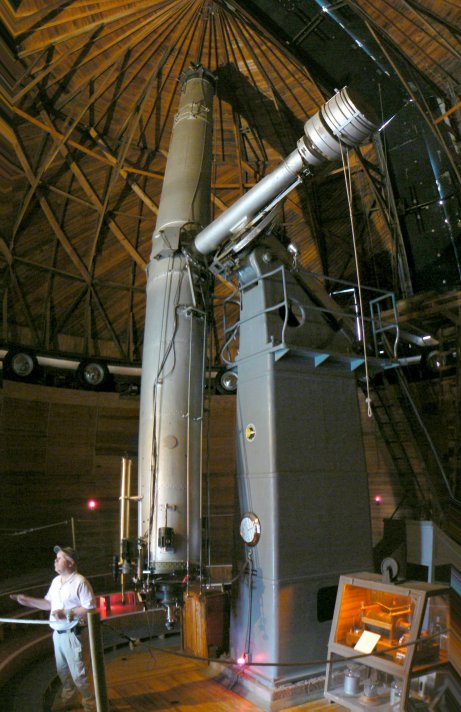 |
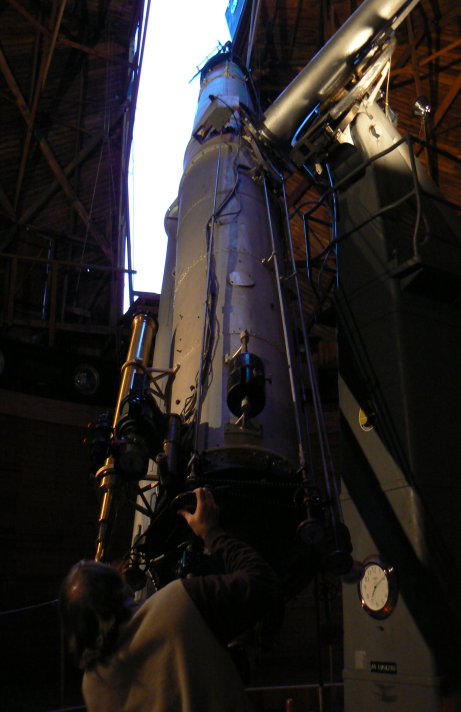 |
| Percival Lowell schaffte sich zur Marsbeobachtung 1896 den 24" Clark-Refraktor an. | |
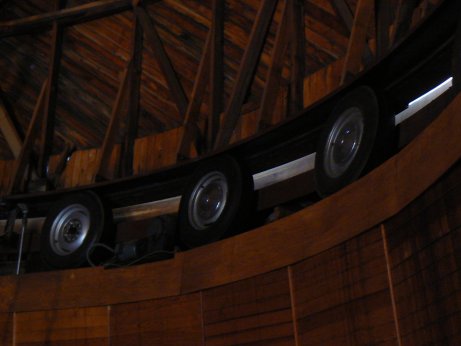 |
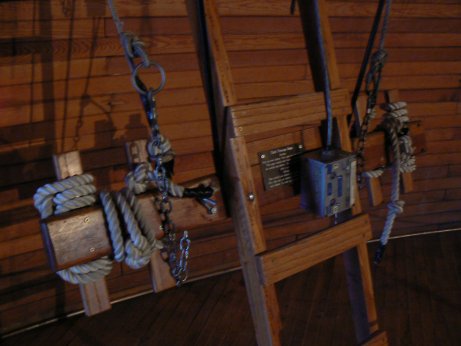 |
| Die Kuppel dreht sich noch heute auf Autoreifen der Marke Chevrolet. | Die Seilzüge zum Öffnen der Holz-Kuppel. |
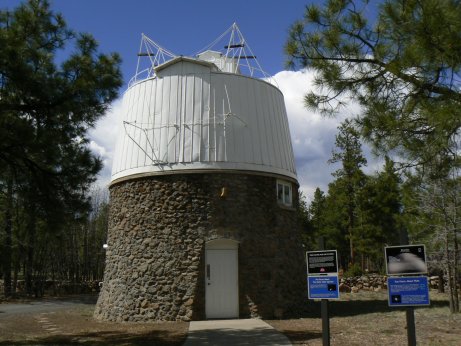 |
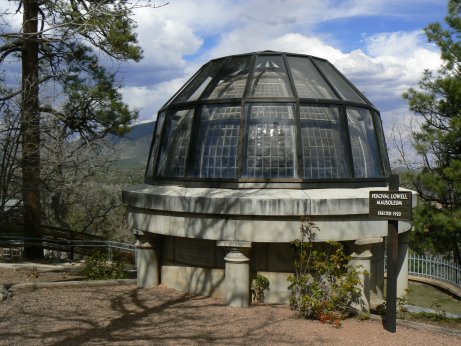 |
| Mit diesem Teleskop fand Clyde Tombaugh am 18.02.1930 Pluto. Im Blinkkomperator von Zeiss zeigte sich das Objekt als springender Lichtpunkt. | Percival Lowell Mausoleum |
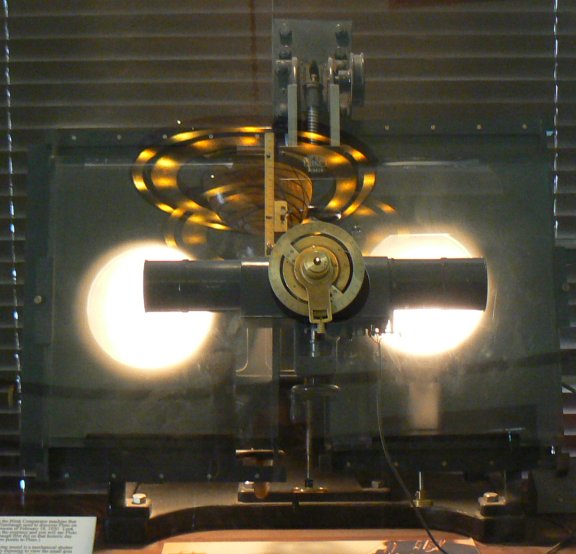
|
This
is the Blink Comparator machine that Clyde Tombaugh used to discover Pluto
on the afternoon of February 18, 1930. This machine was built by the famed Carl Zeiss optical firm of Jena, Germany.
|
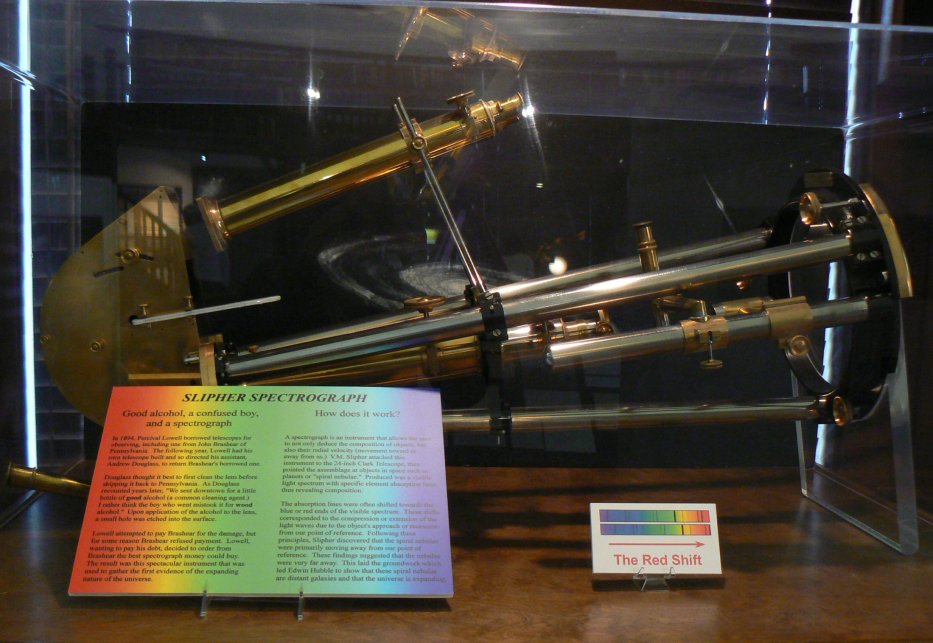 |
| Slipher Spectrograph: Slipher attached this spectrograph to the 24-inch Clark Telescope. Produced was a visible light spectrum with specific element absorption lines. These lines were often shifted towards the blue or red ends of the visible spectrum. Slipher discovered that the spiral nebulae were primarily moving away from our point of reference. This laid the groundwork which led Edwin Hubble to show that these spiral nebulae are distant galaxies and that the universe is expanding. |
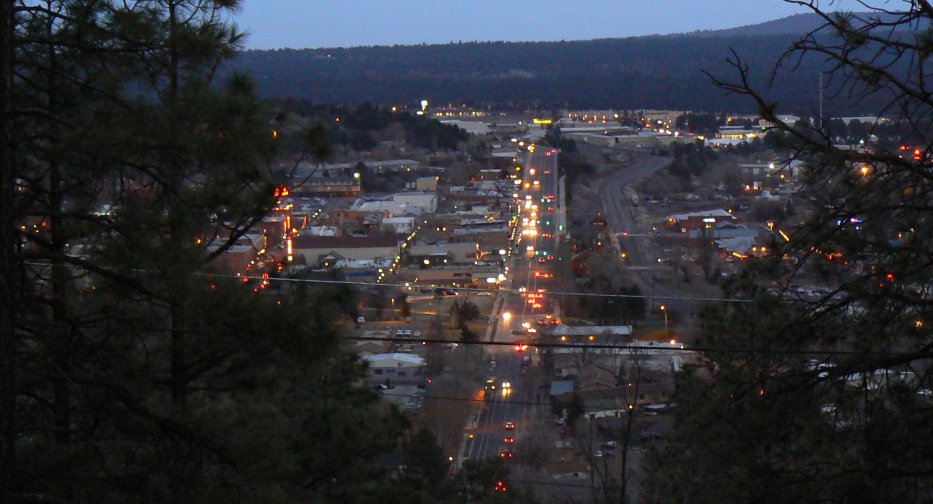 |
| Blick vom Mars-Hill auf die Route 66, die hier durch Flagstaff verläuft.. |
| < zurück > |